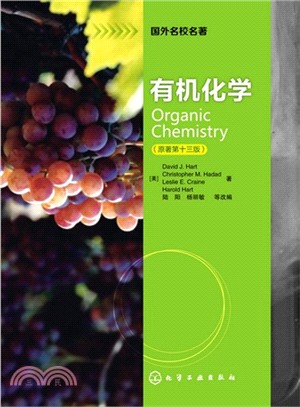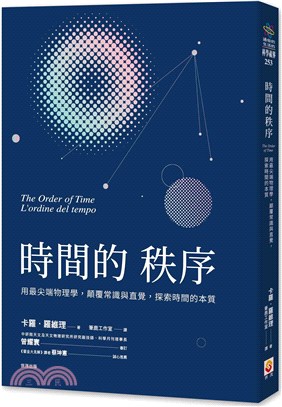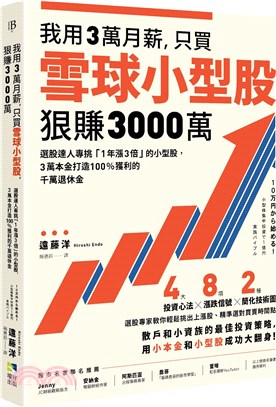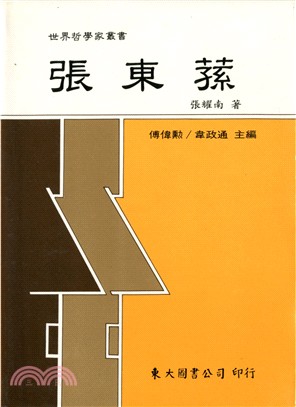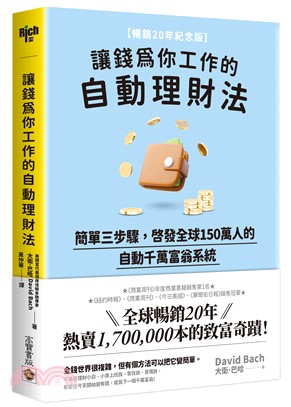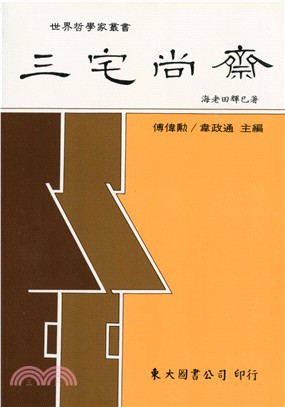商品簡介
目次
Contents
1 Bonding and Isomerism(鍵合和異構)
1.1 How Electrons Are Arranged in Atoms(原子中的電子排布)
1.2 Ionic and Covalent Bonding(離子鍵和共價鍵)
1.3 Carbon and the Covalent Bond(碳原子和共價鍵)
1.4 Carbon-Carbon Single Bonds(碳-碳單鍵)
1.5 Polar Covalent Bonds(極性共價鍵)
1.6 Multiple Covalent Bonds(多重共價鍵)
1.7 Valence(化合價)
1.8 Isomerism(異構現象)
1.9 Writing Structural Formulas(結構式的書寫)
1.10 Abbreviated Structural Formulas(簡化結構式)
1.11 Formal Charge(形式電荷)
1.12 Resonance(共振理論)
1.13 Arrow Formalism(箭頭形式)
1.14 The Orbital View of Bonding; the Sigma Bond(共價鍵的軌道理論;σ鍵)
1.15 Carbon sp3 Hybrid Orbitals(碳的sp3雜化軌道)
1.16 Tetrahedral Carbon; the Bonding in Methane(碳原子的四面體結構;甲烷分子中的碳氫鍵)
1.17 Classification According to Molecular Framework(按分子骨架分類)
1.18 Classification According to Functional Group(按功能基分類)
2 Alkanes and Cycloalkanes; Conformational and Geometric Isomerism(烷烴和環烷烴;構象和幾何異構)
2.1 The Structures of Alkanes(烷烴的結構)
2.2 Nomenclature of Organic Compounds(有機化合物的命名)
2.3 IUPAC Rules for Naming Alkanes(烷烴的IUPAC命名規則)
2.4 Alkyl and Halogen Substituents(烷基和鹵素取代基)
2.5 Use of the IUPAC Rules(IUPAC命名規則的應用)
2.6 Sources of Alkanes(烷烴的來源)
2.7 Physical Properties of Alkanes and Nonbonding Intermolecular Interactions(烷烴的物理性質和分子間的非鍵作用)
2.8 Conformations of Alkanes(烷烴的構象)
2.9 Cycloalkane Nomenclature and Conformation(環烷烴的命名和構象)
2.10 Cis-Trans Isomerism in Cycloalkanes(環烷烴的順反異構)
2.11 Summary of Isomerism(異構現象小結)
2.12 Reactions of Alkanes(烷烴的化學反應)
2.13 The Free-Radical Chain Mechanism of Halogenation(烷烴鹵代的自由基鏈反應機制)
3 Alkenes and Alkynes(烯烴和炔烴)
3.1 Definition and Classification(定義和分類)
3.2 Nomenclature(命名)
3.3 Some Facts about Double Bonds(碳碳雙鍵的特征)
3.4 The Orbital Model of a Double Bond; the Pi Bond(碳碳雙鍵的軌道模型;π鍵)
3.5 Cis-Trans Isomerism in Alkenes(烯烴的順反異構現象)
3.6 Addition and Substitution Reactions Compared(加成和取代反應的比較)
3.7 Polar Addition Reactions(極性加成反應)
3.8 Addition of Unsymmetric Reagents to Unsymmetric Alkenes; Markovnikov‘s Rule(不對稱試劑與不對稱烯烴的加成;馬爾可夫尼可夫規則)
3.9 Mechanism of Electrophilic Addition to Alkenes(烯烴的親電加成機制)
3.10 Markovnikov’s Rule Explained(馬爾可夫尼可夫規則的解釋)
3.11 Reaction Equilibrium: What Makes a Reaction Go?(反應平衡:什么使反應能夠進行下去?)
3.12 Reaction Rates: How Fast Does a Reaction Go?(反應速率:反應進行得有多快?)
3.13 Hydroboration of Alkenes(烯烴的硼氫化反應)
3.14 Addition of Hydrogen(加氫反應)
3.15 Additions to Conjugated Systems(共軛烯烴的加成反應)
3.16 Free-Radical Additions; Polyethylene(自由基加成反應;聚乙烯)
3.17 Oxidation of Alkenes(烯烴的氧化)
3.18 Some Facts about Triple Bonds(?鍵的特征)
3.19 The Orbital Model of a Triple Bond(?鍵的軌道模型)
3.20 Addition Reactions of Alkynes(炔烴的加成反應)
3.21 Acidity of Alkynes(炔烴的酸性)
4 Aromatic Compounds(芳香化合物)
4.1 Some Facts about Benzene(有關苯的實驗事實)
4.2 The Kekule Structure of Benzene(苯的凱庫勒結構式)
4.3 Resonance Model for Benzene(苯的共振結構模型)
4.4 Orbital Model for Benzene(苯的軌道模型)
4.5 Symbols for Benzene(苯的結構表達式)
4.6 Nomenclature of Aromatic Compounds(芳香族化合物的命名)
4.7 The Resonance Energy of Benzene(苯的共振能)
4.8 Electrophilic Aromatic Substitution(芳香親電取代反應)
4.9 The Mechanism of Electrophilic Aromatic Substitution(芳香親電取代反應的機制)
4.10 Ring-Activating and Ring-Deactivating Substituents(苯環的活化基和鈍化基)
4.11 Ortho,Para-Directing and Meta-Directing Groups(鄰,對位定位基和間位定位基)
4.12 The Importance of Directing Effects in Synthesis(定位效應在合成中的重要性)
4.13 Polycyclic Aromatic Hydrocarbons(多環芳香烴)
5 Stereoisomerism(立體異構)
5.1 Chirality and Enantiomers(手性和對映異構體)
5.2 Stereogenic Centers; the Stereogenic Carbon Atom(手性中心;手性碳原子)
5.3 Configuration and the R-S Convention(R-S 構型)
5.4 Polarized Light and Optical Activity(偏振光和光學活性)
5.5 Properties of Enantiomers(對映異構體的性質)
5.6 Fischer Projection Formulas(費歇爾投影式)
5.7 Compounds with More Than One Stereogenic Center; Diastereomers(具有多個手性中心的化合物;非對映異構體)
5.8 Meso Compounds; the Stereoisomers of Tartaric Acid(內消旋化合物;酒石酸的立體異構體)
5.9 Stereochemistry: A Recap of Definitions(立體化學:定義概述)
5.10 Stereochemistry and Chemical Reactions(立體化學和化學反應)
5.11 Resolution of a Racemic Mixture(外消旋體的拆分)
6 Organic Halogen Compounds; Substitution and Elimination Reactions(含鹵有機化合物;取代反應和消除反應)
6.1 Nucleophilic Substitution(親核取代反應)
6.2 Examples of Nucleophilic Substitutions(親核取代反應實例)
6.3 Nucleophilic Substitution Mechanisms(親核取代反應機制)
6.4 The SN2 Mechanism(雙分子親核取代機制)
6.5 The SN1 Mechanism(單分子親核取代機制)
6.6 The SN1 and SN2 Mechanisms Compared(SN1和SN2反應機制的比較)
6.7 Dehydrohalogenation, an Elimination Reaction; the E2 and E1 Mechanisms(脫鹵化氫,消除反應;雙分子消除和單分子消除機制)
6.8 Substitution and Elimination in Competition(取代反應和消除反應的相互競爭)
6.9 Polyhalogenated Aliphatic Compounds(多鹵代脂肪烴)
7 Alcohols, Phenols, and Thiols(醇,酚和硫醇)
7.1 Nomenclature of Alcohols(醇的命名)
7.2 Classification of Alcohols(醇的分類)
7.3 Nomenclature of Phenols(酚的命名)
7.4 Hydrogen Bonding in Alcohols and Phenols(醇和酚分子中的氫鍵)
7.5 Acidity and Basicity Reviewed(酸性和堿性)
7.6 The Acidity of Alcohols and Phenols(醇和酚的酸性)
7.7 The Basicity of Alcohols and Phenols(醇和酚的堿性)
7.8 Dehydration of Alcohols to Alkenes(醇脫水生成烯烴的反應)
7.9 The Reaction of Alcohols with Hydrogen Halides(醇與鹵化氫的反應)
7.10 Other Ways to Prepare Alkyl Halides from Alcohols(由醇制備鹵代烴的方法)
7.11 A Comparison of Alcohols and Phenols(醇和酚的比較)
7.12 Oxidation of Alcohols to Aldehydes, Ketones, and Carboxylic Acids(醇的氧化反應--生成醛,酮和羧酸)
7.13 Alcohols with More Than One Hydroxyl Group(多元醇)
7.14 Aromatic Substitution in Phenols(酚的芳香取代反應)
7.15 Oxidation of Phenols(酚的氧化反應)
7.16 Phenols as Antioxidants(酚類抗氧化劑)
7.17 Tests for Phenols(酚的鑒別)
7.18 Thiols, the Sulfur Analogs of Alcohols and Phenols(硫醇,醇和酚的硫類似物)
8 Ethers and Epoxides(醚和環氧化合物)
8.1 Nomenclature of Ethers(醚的命名)
8.2 Physical Properties of Ethers(醚的物理性質)
8.3 Ethers as Solvents(醚作溶劑)
8.4 The Grignard Reagent; an Organometallic Compound(格利雅試劑;一種有機金屬化合物)
8.5 Preparation of Ethers(醚的制備)
8.6 Cleavage of Ethers(醚的裂解)
8.7 Epoxides (Oxiranes)〔環氧化物(環氧乙烷)〕
8.8 Reactions of Epoxides(環氧化物的反應)
8.9 Cyclic Ethers(環醚)
9 Aldehydes and Ketones(醛和酮)
9.1 Nomenclature of Aldehydes and Ketones(醛和酮的命名)
9.2 Some Common Aldehydes and Ketones(常見的醛和酮)
9.3 Synthesis of Aldehydes and Ketones(醛和酮的制備)
9.4 Aldehydes and Ketones in Nature(天然醛酮)
9.5 The Carbonyl Group(羰基)
9.6 Nucleophilic Addition to Carbonyl Groups: An Overview(羰基的親核加成:概述)
9.7 Addition of Alcohols: Formation of Hemiacetals and Acetals(與醇加成:生成半縮醛和縮醛)
9.8 Addition of Water; Hydration of Aldehydes and Ketones(與水加成:醛酮的水合)
9.9 Addition of Grignard Reagents and Acetylides(與Grignard試劑和炔化物加成)
9.10 Addition of Hydrogen Cyanide; Cyanohydrins(與氫氰酸加成:生成氰醇)
9.11 Addition of Nitrogen Nucleophiles(與含氮親核試劑加成)
9.12 Reduction of Carbonyl Compounds(羰基化合物的還原)
9.13 Oxidation of Carbonyl Compounds(羰基化合物的氧化)
9.14 Keto-Enol Tautomerism(酮式-烯醇式互變異構)
9.15 Acidity of a-Hydrogens; the Enolate Anion(a-氫的酸性;烯醇負離子)
9.16 Deuterium Exchange in Carbonyl Compounds(羰基化合物的氘代)
9.17 Halogenation(鹵代反應)
9.18 The Aldol Condensation(醇醛縮合反應)
9.19 The Mixed Aldol Condensation(混合醇醛縮合)
9.20 Commercial Syntheses via the Aldol Condensation(醇醛縮合反應在合成中的應用)
10 Carboxylic Acids and Their Derivatives(羧酸及其衍生物)
10.1 Nomenclature of Acids(羧酸的命名)
10.2 Physical Properties of Acids(羧酸的物理性質)
10.3 Acidity and Acidity Constants(酸性和酸度常數)
10.4 What Makes Carboxylic Acids Acidic?(羧酸的酸性基)
10.5 Effect of Structure on Acidity; the Inductive Effect Revisited(羧酸的結構對酸性的影響;誘導效應的影響)
10.6 Conversion of Acids to Salts(成鹽反應)
10.7 Preparation of Acids(羧酸的制備)
10.8 Decarboxylation(脫羧反應)
10.9 Carboxylic Acid Derivatives(羧酸衍生物)
10.10 Esters(酯)
10.11 Preparation of Esters; Fischer Esterification(酯的制備;Fischer酯化反應)
10.12 The Mechanism of Acid-Catalyzed Esterification; Nucleophilic Acyl Substitution(酸催化酯化反應機制;?基的親核取代)
10.13 Lactones(內酯)
10.14 Saponification of Esters(酯的皂化反應)
10.15 Ammonolysis of Esters(酯的氨解)
10.16 Reaction of Esters with Grignard Reagents(酯與格利雅試劑的反應)
10.17 Reduction of Esters(酯的還原)
10.18 The Need for Activated Acyl Compounds(?基化合物活性的影響因素)
10.19 Acyl Halides(?鹵)
10.20 Acid Anhydrides(酸酐)
10.21 Amides(?胺)
10.22 A Summary of Carboxylic Acid Derivatives(羧酸衍生物小結)
10.23 The a-Hydrogen of Esters; the Claisen Condensation(酯的a-氫;Claisen縮合)
11 Amines and Related Nitrogen Compounds(胺和相關含氮化合物)
11.1 Classification and Structure of Amines(胺的結構和分類)
11.2 Nomenclature of Amines(胺的命名)
11.3 Physical Properties and Intermolecular Interactions of Amines(胺的物理性質和分子間相互作用)
11.4 Preparation of Amines; Alkylation of Ammonia and Amines(胺的制備;氨和胺的烷基化)
11.5 Preparation of Amines; Reduction of Nitrogen Compounds(胺的制備;含氮化合物的還原)
11.6 The Basicity of Amines(胺的堿性)
11.7 Comparison of the Basicity and Acidity of Amines and Amides(胺和?胺的酸堿性比較)
11.8 Reaction of Amines with Strong Acids; Amine Salts(胺與強酸的反應;胺鹽)
11.9 Chiral Amines as Resolving Agents(手性胺作為拆分試劑)
11.10 Acylation of Amines with Acid Derivatives(胺與羧酸衍生物的?化反應)
11.11 Quaternary Ammonium Compounds(季銨化合物)
11.12 Aromatic Diazonium Compounds(芳香重氮化合物)
11.13 Diazo Coupling; Azo Dyes(重氮偶聯反應;偶氮染料)
12 Spectroscopy and Structure Determination(波譜學和結構測定)
12.1 Principles of Spectroscopy(波譜學原理)
12.2 Nuclear Magnetic Resonance Spectroscopy(核磁共振波譜)
12.3 13C NMR Spectroscopy(13C NMR譜)
12.4 Infrared Spectroscopy(紅外光譜)
12.5 Visible and Ultraviolet Spectroscopy(紫外-可見光譜)
12.6 Mass Spectrometry(質譜)
13 Heterocyclic Compounds(雜環化合物)
13.1 Pyridine: Bonding and Basicity(?啶:結構和堿性)
13.2 Substitution in Pyridine(?啶的取代反應)
13.3 Other Six-Membered Heterocycles(其他六元雜環)
13.4 Five-Membered Heterocycles: Furan, Pyrrole, and Thiophene(五元雜環:?喃,?咯和?吩)
13.5 Electrophilic Substitution in Furan, Pyrrole, and Thiophene(?喃,?咯和?吩的親電取代反應)
13.6 Other Five-Membered Heterocycles: Azoles(其他五元雜環;唑類)
13.7 Fused-Ring Five-Membered Heterocycles: Indoles and Purines(稠環類五元雜環:??和嘌呤)
14 Synthetic Polymers(合成高聚物)
14.1 Classification of Polymers(高聚物的分類)
14.2 Free-Radical Chain-Growth Polymerization(自由基鏈增長聚合)
14.3 Cationic Chain-Growth Polymerization(陽離子鏈增長聚合)
14.4 Anionic Chain-Growth Polymerization(陰離子鏈增長聚合)
14.5 Stereoregular Polymers; Ziegler-Natta Polymerization(有規立構高聚物;齊格勒-納塔聚合)
14.6 Diene Polymers: Natural and Synthetic Rubber(二烯高聚物:天然橡膠和合成橡膠)
14.7 Copolymers(共聚物)
14.8 Step-Growth Polymerization: Dacron and Nylon(逐步增長聚合:滌綸和尼龍)
14.9 Other Step-Growth Polymers(其他逐步增長聚合物)
15 Lipids and Detergents(脂類和洗滌劑)
15.1 Fats and Oils; Triesters of Glycerol(油脂;甘油三酯)
15.2 Hydrogenation of Vegetable Oils(植物油的氫化反應)
15.3 Saponification of Fats and Oils; Soap(油脂的皂化反應;肥皂)
15.4 How Do Soaps Work?(肥皂如何去污?)
15.5 Synthetic Detergents (Syndets)(人工合成洗滌劑)
15.6 Phospholipids(磷脂)
15.7 Prostaglandins, Leukotrienes, and Lipoxins(前列腺素,白三烯和脂氧素)
15.8 Waxes(蠟)
15.9 Terpenes and Steroids(?類和甾體化合物)
16 Carbohydrates(糖類)
16.1 Definitions and Classification(糖的定義和分類)
16.2 Monosaccharides(單糖)
16.3 Chirality in Monosaccharides; Fischer Projection Formulas and D, L-Sugars(單糖的手性;Fischer投影式和D,L-型糖)
16.4 The Cyclic Hemiacetal Structures of Monosaccharides(單糖的環狀半縮醛結構)
16.5 Anomeric Carbons; Mutarotation(異頭碳;變旋光現象)
16.6 Pyranose and Furanose Structures(?喃糖和?喃糖的結構)
16.7 Conformations of Pyranoses(?喃糖的構象)
16.8 Esters and Ethers from Monosaccharides(單糖的成酯和成醚反應)
16.9 Reduction of Monosaccharides(單糖的還原)
16.10 Oxidation of Monosaccharides(單糖的氧化)
16.11 Formation of Glycosides from Monosaccharides(單糖的成?反應)
16.12 Disaccharides(雙糖)
16.13 Polysaccharides(多糖)
16.14 Sugar Phosphates(糖的磷酸酯)
16.15 Deoxy Sugars(脫氧糖)
16.16 Amino Sugars(氨基糖)
16.17 Ascorbic Acid (Vitamin C)〔抗壞血酸(維生素C)〕
17 Amino Acids, Peptides, and Proteins(氨基酸,?和蛋白質)
17.1 Naturally Occurring Amino Acids(天然氨基酸)
17.2 The Acid-Base Properties of Amino Acids(氨基酸的酸堿性)
17.3 The Acid-Base Properties of Amino Acids with More Than One Acidic or Basic Group(含有多個酸性或堿性基團氨基酸的酸堿性)
17.4 Electrophoresis(電泳)
17.5 Reactions of Amino Acids(氨基酸的反應)
17.6 The Ninhydrin Reaction(?三酮反應)
17.7 Peptides(?)
17.8 The Disulfide Bond(二硫鍵)
17.9 Proteins(蛋白質)
17.10 The Primary Structure of Proteins(蛋白質的一級結構)
17.11 The Logic of Sequence Determination(序列測定的推理方法)
17.12 Secondary Structure of Proteins(蛋白質的二級結構)
17.13 Tertiary Structure: Fibrous and Globular Proteins(三級結構:纖維蛋白和球蛋白)
17.14 Quaternary Protein Structure(蛋白質的四級結構)
18 Nucleotides and Nucleic Acids(核?酸和核酸)
18.1 The General Structure of Nucleic Acids(核酸的一般結構)
18.2 Components of Deoxyribonucleic Acid (DNA)(脫氧核糖核酸的組成)
18.3 Nucleosides(核?)
18.4 Nucleotides(核?酸)
18.5 The Primary Structure of DNA(DNA的一級結構)
18.6 Sequencing Nucleic Acids(核酸的測序)
18.7 Secondary DNA Structure; the Double Helix(DNA的二級結構;雙螺旋結構)
18.8 DNA Replication(DNA復制)
18.9 Ribonucleic Acids; RNA(核糖核酸;RNA)
18.10 The Genetic Code and Protein Biosynthesis(遺傳密碼和蛋白質的生物合成)
18.11 Other Biologically Important Nucleotides(生物學上其他的重要核?酸)
主題書展
更多書展本週66折
您曾經瀏覽過的商品
購物須知
大陸出版品因裝訂品質及貨運條件與台灣出版品落差甚大,除封面破損、內頁脫落等較嚴重的狀態,其餘商品將正常出貨。
特別提醒:部分書籍附贈之內容(如音頻mp3或影片dvd等)已無實體光碟提供,需以QR CODE 連結至當地網站註冊“並通過驗證程序”,方可下載使用。
無現貨庫存之簡體書,將向海外調貨:
海外有庫存之書籍,等候約45個工作天;
海外無庫存之書籍,平均作業時間約60個工作天,然不保證確定可調到貨,尚請見諒。
為了保護您的權益,「三民網路書店」提供會員七日商品鑑賞期(收到商品為起始日)。
若要辦理退貨,請在商品鑑賞期內寄回,且商品必須是全新狀態與完整包裝(商品、附件、發票、隨貨贈品等)否則恕不接受退貨。




